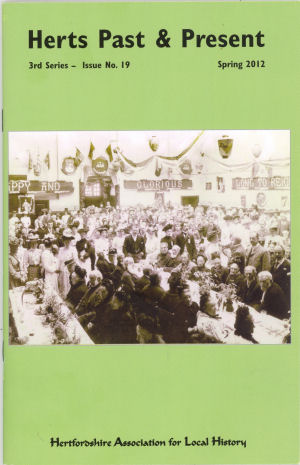Hertford's Coronation Dinner, 1902: Special events like this, where a large number of elderly residents were treated to a great dinner, were an opportunity for a Town and its well-to-do inhabitants to enhance their social standing. The coronation celebrations would have involved a wide range of people in different roles, and at this date there may well have been photographs. For the bigger towns, at least, the planning for, and execution of, such events will be well covered in the local press. In addition there might be surviving ephemera - such as programmes. Even if such records do not mention your ancestor they help to paste a picture of what was going on in the place where they lived.
The rich man in his castle
The poor man at his gate
He made them high and lowly
And ordered their estate.
Such articles serve to remind us of the gulf between the rich and the poor - and the importance of keeping financial and social status issues in mind when researching your ancestors.
Cartage in Jacobean Hertfordshire: I learnt something new on reading this article. When the King traveled around the country he had the right to "hire" your carts to carry his goods at a price that he chose. This commandeering of carts, etc., did not go done well with the inhabitants of Hertfordshire, as the roads from London to a significant part of the country went through Hertfordshire. In fact cartage could have been one of the reasons Hertfordshire supported the Parliamentarians in the later Civil War.
While your ancestor may no have been affected by cartage, the article is a reminder of why it helps to know what factors (social, weather, law changes, etc.) would have affected him at the time you are studying.
Tring and the Railway: Perhaps the opening words of the abstract "In this topical look at railway and landscape ..." led me to expect more that I found. It discusses the origin of the railway in the first half of nineteenth century from contemporary railway records and if it restricted itself to this period I would be much happier - although I might have expected a mention of the branch line to Aylesbury which passes through through the parish - and was the first ever purpose-built branch line. However it then jumps to the mid 20th century - incorrectly stating the Silk Mill closed sometime after 1956 when it actually closed in 1898, when the building (which still stands) was converted to workshops for the Rothschild estate. Even worse it outrageously suggests that a nearly 20% decrease the population of Tring between 1881 and 1921 was "possibly due to the number of men killed in World War I." (The drop actually happened between 1891 and 1901 due to the boundaries being redrawn.) The article refers to electrification in 1966 and stops there, giving the impression it was written over 40 years ago. There is, for example, no reference to 30 or more books and booklets that have been published relevant to the history of Tring in the last 40 years, or the wealth of information available via modern online census indexes.



